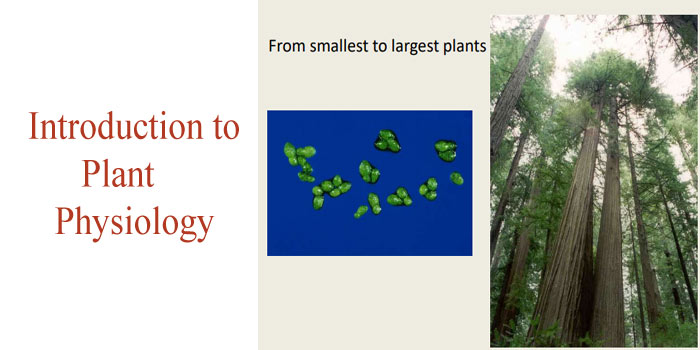
Introduction to plant physiology:
Plant physiology is define as working of the cells, the tissues and organs of the living things., and to understand the physics and chemistry of these above mentioned functions.
actually basically plant physiology shows how “structure correlates with the function”
Plant anatomy: Cell
- Plants cells are basically building blocks
- plants cells than can specialized into the function and different forms
- after working collectively and formation of tissues and than by supporting each other and plants make themselves able to survive
- the level organization is : cells combine to form tissues and than tissues work together to form organ and than the organs collectively make complete plant.
Types of Plant tissues:
usually all of the organs of the plant like roots, stem and leaves are composed of same kind of tissue. there are totally three known kind of tissue:
- The Dermal tissues: (Dermal tissues are outermost tissues of the Plants.)
- like the skin of the animal epidermis is the outer most layer of the cells in the plants.
- cuticle that is the waxy layer that’s function is to prevent loss of water and it is present on the epidermis of the stems and leaves.
- trichome, hair can also present
- for water and nutrients absorption , roots epidermis have root hairs.
Dermal tissues provide resistance mechanism:
- any one of the biological and physical barrier that is present in plants always for protection against any different pathogen or stress factor.
Structural barrier:
- First of all epidermis layer that is called as the first line of defense.
- second one is the waxy cuticle layer on the leaves and fruits.
- cuticle that is composed of the cutin, cellulose and pectin, this is thin in aquatic plants while it is thick in desert plants like cacti. hydrophobic plants don’t allow water to stay on the plant surface for long time so it is useful for the fungal spore germination.
- Vascular tissues: (these are the conducting tissues in plants that transport water and glucose.)
- the usually commonly known function of the vascular tissues is the transport of water and solute like organic material which is sugar in case of plants throughout the plant.
- the function of the xylem is to transport water and ions that are dissolved from the roots to the leaves and stem.
- the function of the phloem is to transport sugar from the leaves to the rest of the plants
Xylem:
- its function to transport water and the minerals that are dissolved.
- water conducting cells here tracheids and vessel elements.
- tracheids are thin long tube like in structure and have no perforation at the end.
- vessel elements are short in size and wide in structure and have perforation at the end these cells collectively form the tube that is called vessel.
- both these types of the cells have pits that is thin section on their wall
- xylem cells are actually called as dead cells and are usually hollow cells that consist of only, the cell wall.
Phloem:
- These are the alive cells having the function to transport organic material like sugar.
- but they have no nucleus and other organelles.
- phloem are made up of the cells that are known as sieve tube members(STM)
- the sieve tube members joined together by the companion cells . companion cells helps to load material into the STM.
- at the end of STM large pores are present that are called sieve pate.
- Ground tissues: (These are the tissues that form bulk of the inner layer of the plant body.)
- the bulk of the plant organ is composed of the ground tissue
- than the plant organ is that is composed of the tissues it will act together to perform a specific function.
- they perform the function like metabolism storage and then the support.
http://feeds.feedburner.com/ecarepk